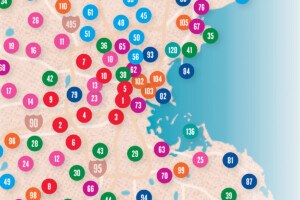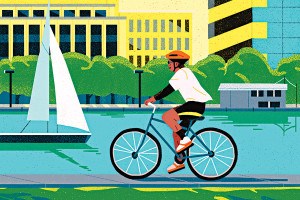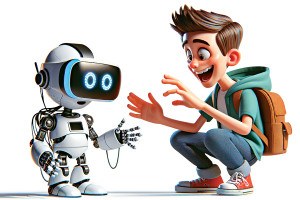NASA Can Spot Christmas Lights from Space

A birdseye view of a home in Dorchester via YouTube
The suburban arms race to have the brightest Christmas lights in America can get pretty heated—so heated, in fact, that it spills out into space. This week, NASA has released proof that our holiday lights can, indeed, be seen by the Marvin Martians and free-floating Sandra Bullocks of the universe.

Image via NASA
NASA just released images of American cities taken from one of its satellites, showing that the light intensity actually increases by as much as 50 percent during the holiday season. Indeed, those little bulbs and glowing Santas have not gone unnoticed in the great beyond. NASA released color-coded maps to demonstrate the change. Green areas show where light usage increased in December, yellow show where there was no change, and red show areas where light decreased. According to NASA, the lights got especially bright in the suburbs:
The science team found that light intensity increased by 30 to 50 percent in the suburbs and outskirts of major cities. Lights in the central urban areas did not increase as much as in the suburbs, but still brightened by 20 to 30 percent.
This makes sense, given suburbs have stand-alone homes with yards (and, presumably, people with a lot of time on their hands.) The fact that our holiday displays have made it to space shouldn’t surprise you quite as much when you consider some of the more outrageous ones.
Here, for instance, is a drones-eye view of the Dorchester home with more than 20,000 lights. NASA wasn’t able to capture images of Boston’s light display. Snow, unfortunately, reflects light, making it hard to separately image artificial lights, and forcing NASA to stick to warm-weather cities.
But let this home serve as our assurance that there’s a lot of light coming from the Boston area this December.


